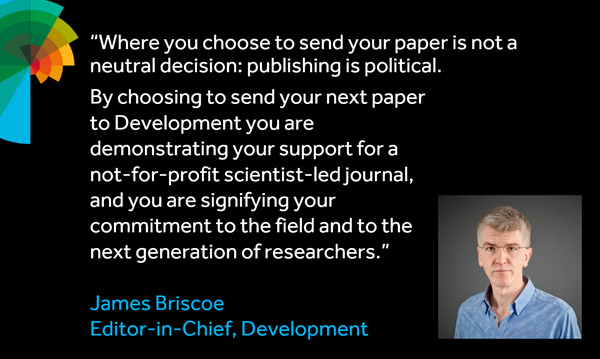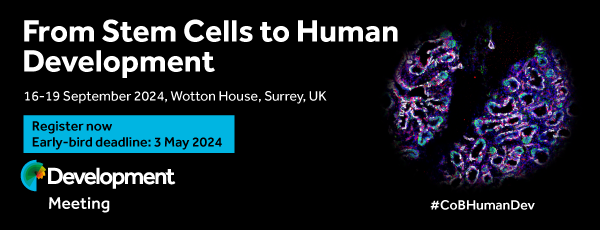Issues
-
Cover image
Cover Image
 Cover: Transgenic crustacean (Parhyale hawaiensis) carrying a gene trap that expresses DsRed at the distal tip of appendages (DsRed in red, cuticle autofluorescence in blue). Integrase-mediated trap conversion (iTRAC) allows such traps to be used as platforms for establishing a wide variety of genetic tools, both in established and emerging model organisms. See Technical research report by Kontarakis et al. on p. 2625.
Cover: Transgenic crustacean (Parhyale hawaiensis) carrying a gene trap that expresses DsRed at the distal tip of appendages (DsRed in red, cuticle autofluorescence in blue). Integrase-mediated trap conversion (iTRAC) allows such traps to be used as platforms for establishing a wide variety of genetic tools, both in established and emerging model organisms. See Technical research report by Kontarakis et al. on p. 2625. - PDF Icon PDF LinkTable of contents
SPOTLIGHT
REVIEW
DEVELOPMENT AND STEM CELLS
RESEARCH REPORT
RESEARCH ARTICLE
Tangential migration and proliferation of intermediate progenitors of GABAergic neurons in the mouse telencephalon
TECHNICAL PAPER
ERRATUM
ARTICLE OF INTEREST IN OTHER COB JOURNALS
FROM JOURNAL OF CELL SCIENCE
IN THIS ISSUE
Call for papers: Uncovering Developmental Diversity

Development invites you to submit your latest research to our upcoming special issue: Uncovering Developmental Diversity. This issue will be coordinated by our academic Editor Cassandra Extavour (Harvard University, USA) alongside two Guest Editors: Liam Dolan (Gregor Mendel Institute of Molecular Plant Biology, Austria) and Karen Sears (University of California Los Angeles, USA).
Choose Development in 2024

In this Editorial, Development Editor-in-Chief James Briscoe and Executive Editor Katherine Brown explain how you support your community by publishing in Development and how the journal champions serious science, community connections and progressive publishing.
Journal Meeting: From Stem Cells to Human Development

Register now for the 2024 Development Journal Meeting From Stem Cells to Human Development. Early-bird registration deadline: 3 May. Abstract submission deadline: 21 June.
Pluripotency of a founding field: rebranding developmental biology

This collaborative Perspective, the result of a workshop held in 2023, proposes a set of community actions to increase the visibility of the developmental biology field. The authors make recommendations for new funding streams, frameworks for collaborations and mechanisms by which members of the community can promote themselves and their research.
Read & Publish Open Access publishing: what authors say

We have had great feedback from authors who have benefitted from our Read & Publish agreement with their institution and have been able to publish Open Access with us without paying an APC. Read what they had to say.



